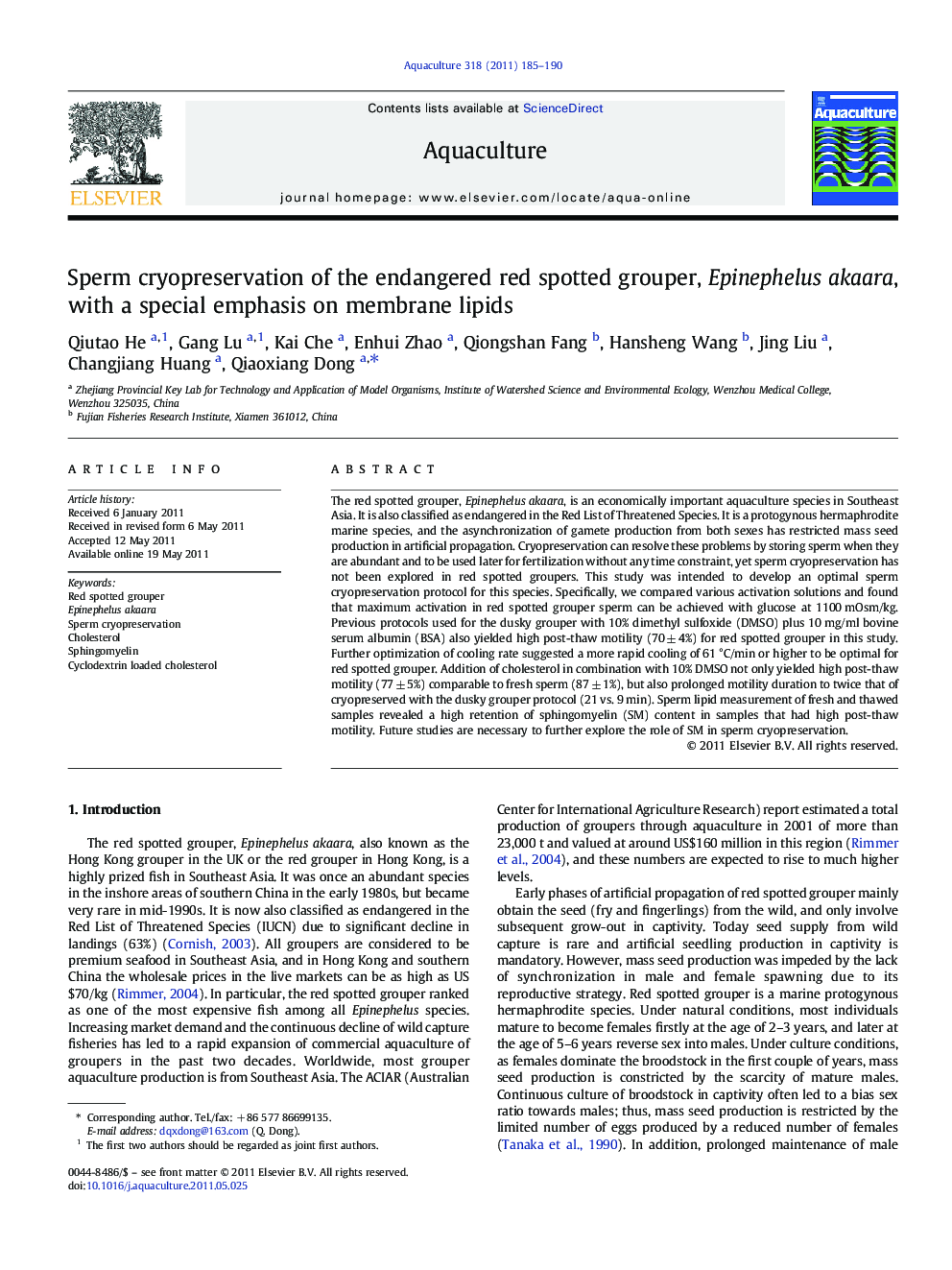| Article ID | Journal | Published Year | Pages | File Type |
|---|---|---|---|---|
| 2422919 | Aquaculture | 2011 | 6 Pages |
The red spotted grouper, Epinephelus akaara, is an economically important aquaculture species in Southeast Asia. It is also classified as endangered in the Red List of Threatened Species. It is a protogynous hermaphrodite marine species, and the asynchronization of gamete production from both sexes has restricted mass seed production in artificial propagation. Cryopreservation can resolve these problems by storing sperm when they are abundant and to be used later for fertilization without any time constraint, yet sperm cryopreservation has not been explored in red spotted groupers. This study was intended to develop an optimal sperm cryopreservation protocol for this species. Specifically, we compared various activation solutions and found that maximum activation in red spotted grouper sperm can be achieved with glucose at 1100 mOsm/kg. Previous protocols used for the dusky grouper with 10% dimethyl sulfoxide (DMSO) plus 10 mg/ml bovine serum albumin (BSA) also yielded high post-thaw motility (70 ± 4%) for red spotted grouper in this study. Further optimization of cooling rate suggested a more rapid cooling of 61 °C/min or higher to be optimal for red spotted grouper. Addition of cholesterol in combination with 10% DMSO not only yielded high post-thaw motility (77 ± 5%) comparable to fresh sperm (87 ± 1%), but also prolonged motility duration to twice that of cryopreserved with the dusky grouper protocol (21 vs. 9 min). Sperm lipid measurement of fresh and thawed samples revealed a high retention of sphingomyelin (SM) content in samples that had high post-thaw motility. Future studies are necessary to further explore the role of SM in sperm cryopreservation.
